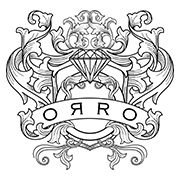Showroom operating hours: For the month of December 2025. We are open daily from 11am till 10pm
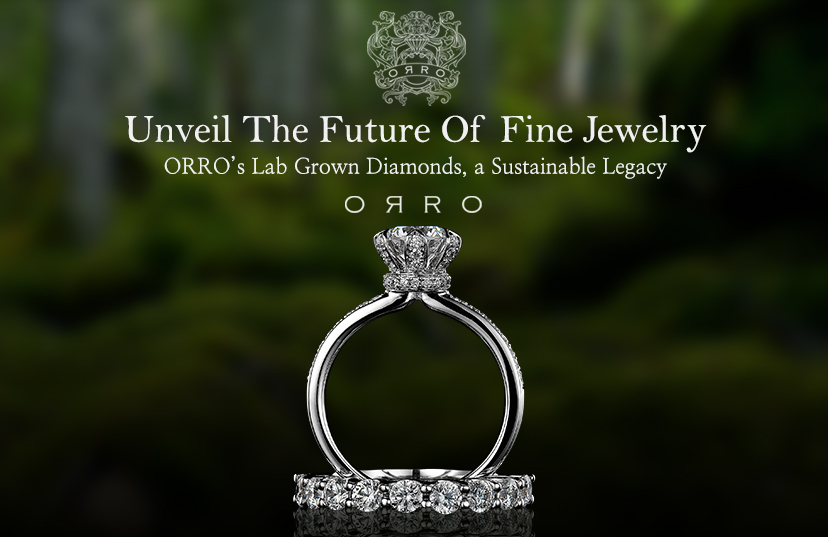
An Introduction | Lab Grown Diamonds
Diamonds have long been the preferred choice for high-end jewelry, serving as a symbol of significant milestones in life such as engagements and anniversaries. Despite their beauty, diamonds are rare precious stones that form deep within the Earth's crust under intense heat and pressure. Unearthing diamonds requires miners to tunnel through the Earth's crust, extract the mineral stones, and bring back the ore for further processing. This long and tedious process is a key factor contributing to the rarity of naturally mined diamonds.
There is often confusion surrounding the term "lab-grown diamond," and whether or not it is a real diamond. The answer is a resounding YES.
Thanks to advancements in technology, diamonds can now be cultured or grown in highly controlled laboratory environments that replicate the natural diamond formation process. Lab-grown diamonds consist of the same material as natural diamonds - carbon atoms arranged in the same diamond crystal structure - allowing them to exhibit the same fire and brilliance as natural diamonds. Additionally, lab-grown diamonds possess the same chemical and physical properties as natural diamonds. In essence, the only difference between lab-grown diamonds and natural diamonds is their method of creation.
There is often confusion surrounding the term "lab-grown diamond," and whether or not it is a real diamond. The answer is a resounding YES.
Thanks to advancements in technology, diamonds can now be cultured or grown in highly controlled laboratory environments that replicate the natural diamond formation process. Lab-grown diamonds consist of the same material as natural diamonds - carbon atoms arranged in the same diamond crystal structure - allowing them to exhibit the same fire and brilliance as natural diamonds. Additionally, lab-grown diamonds possess the same chemical and physical properties as natural diamonds. In essence, the only difference between lab-grown diamonds and natural diamonds is their method of creation.
The Creation | ORRO Certified Lab Grown Diamonds
There are two primary methods used to cultivate diamond crystals: the High Pressure High Temperature (HPHT) method and the Chemical Vapor Deposition (CVD) method. The traditional HPHT method involves starting with a diamond seed and replicating the high pressure and high temperature conditions found in nature to grow a full diamond. On the other hand, the CVD method involves placing a diamond crystal in a sealed chamber filled with carbon-rich vapor and heating it up to 800°C. Carbon atoms are extracted from the gas and deposited on a wafer of diamond crystal, allowing the gemstone to grow layer by layer.
At ORRO, we pride ourselves on our exquisite selection of ORRO Certified Lab Grown Diamonds, which are produced using cutting-edge techniques such as High Pressure High Temperature (HPHT) and Chemical Vapor Deposition (CVD). These advanced methods allow us to create diamonds that are indistinguishable from their natural counterparts in terms of their chemical, physical, and optical properties.
Once the rough diamonds are produced, they are carefully selected and sent to our in-house cutting and polishing facility located within our state-of-the-art workshop. Here, our skilled craftsmen use the latest technology and techniques to precisely cut and polish each diamond to perfection. The result is a stunning and brilliant diamond that is a true testament to our commitment to excellence and innovation in the field of diamond production.
At ORRO, we pride ourselves on our exquisite selection of ORRO Certified Lab Grown Diamonds, which are produced using cutting-edge techniques such as High Pressure High Temperature (HPHT) and Chemical Vapor Deposition (CVD). These advanced methods allow us to create diamonds that are indistinguishable from their natural counterparts in terms of their chemical, physical, and optical properties.
Once the rough diamonds are produced, they are carefully selected and sent to our in-house cutting and polishing facility located within our state-of-the-art workshop. Here, our skilled craftsmen use the latest technology and techniques to precisely cut and polish each diamond to perfection. The result is a stunning and brilliant diamond that is a true testament to our commitment to excellence and innovation in the field of diamond production.
4 C'S of Lab-Grown Diamonds
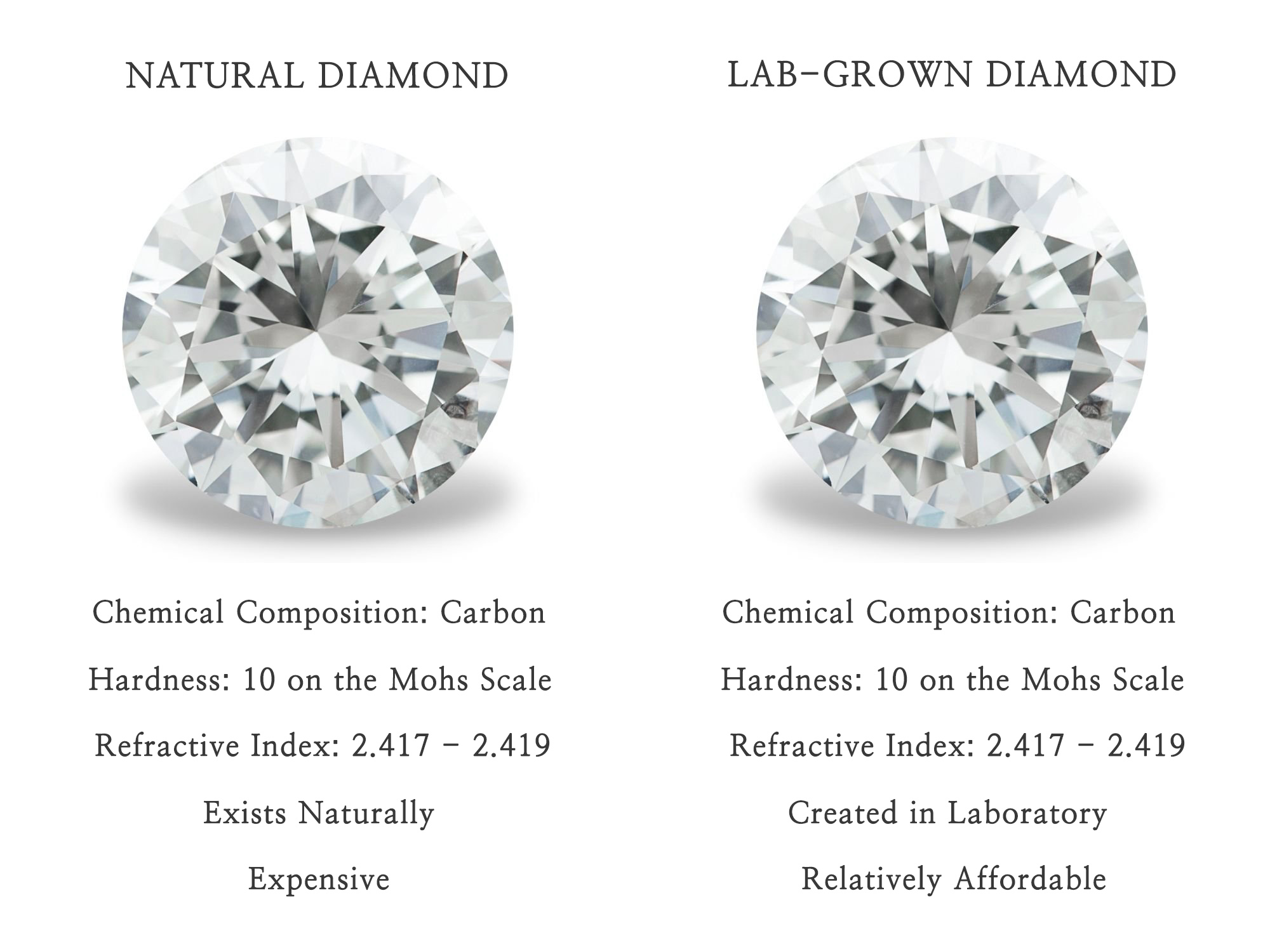
Lab-grown diamonds, also known as synthetic, cultivated, or man-made diamonds, are a remarkable innovation in the diamond industry. These diamonds are graded and certified based on the same 4 C's - Cut, Carat, Clarity, and Color - used for natural diamonds. The 4 C's determine the diamond's quality and value, and lab-grown diamonds are no exception. Despite being laboratory created, lab-grown diamonds are every bit as stunning and valuable as their natural counterparts. The precision and advanced technology used to grow these diamonds ensure that they meet the same high standards as natural diamonds, making them an excellent choice for those seeking a sustainable and ethical alternative to mined diamonds.
Carat
The weight of a diamond is measured in carats, with one carat equivalent to 0.2 grams, divided into 100 points. For instance, a diamond weighing 0.25 carats may be referred to as 25 points. However, this unit of measurement is not generally used for diamonds weighing more than one carat. The carat weight of lab-grown and natural diamonds is measured and expressed in the same manner.
Cut
Cut is a significant aspect of a diamond's beauty and is the 4C's characteristic most influenced by humans. A well-cut diamond displays maximum fire and brilliance, reflecting and refracting light to a greater extent. A diamond's cut quality is determined by its symmetry, angles, and proportions, and is graded on a scale ranging from Ideal, Excellent, Very Good, Good, Fair, to Poor. A poorly cut diamond, whether lab-grown or naturally mined, will appear dull despite being free of inclusions. In terms of cut quality, there is no difference between lab-grown and natural diamonds.
Clarity
The clarity of a diamond refers to the presence of inclusions or blemishes within the stone. Lab-grown diamonds and natural diamonds differ significantly in clarity. Lab-grown diamonds are produced under highly controlled conditions, resulting in a higher clarity grade or even a flawless grade. They are graded on the clarity scale developed by GIA, ranging from FL to I3, with the lower clarity grade indicating more imperfections.

Colour
Impurities in a diamond are responsible for its color. Lab-grown diamonds are graded based on the color scale developed by GIA, ranging from D to Z, with each descending letter denoting an increasing amount of color (yellow, brown, or gray) in the diamonds. The color grading of lab-grown diamonds is typically done by IGI (International Gemological Institute) or GIA (Gemmology Institute of America) in a similar manner to natural diamonds.

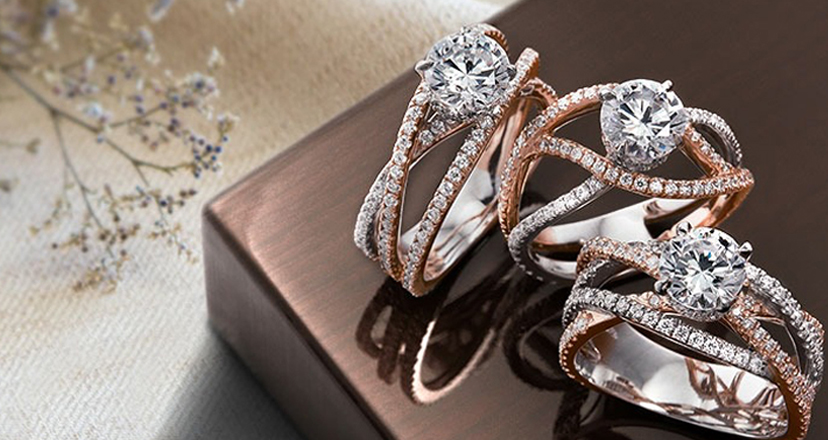
ORRO Certified Lab Grown Diamonds
ORRO takes great pride in our commitment to providing our customers with the highest level of quality and assurance. That's why each ORRO Certified Lab Grown Diamond is accompanied by our exclusive, weighty trademark metal certificate card, setting us apart as the first in the world to issue such a certificate in a sleek and convenient credit card size.
Our certificate is an essential component in verifying the authenticity and value of your diamond. Each certificate includes a unique report number and laser inscription, ensuring that you receive the exact diamond you have selected. It also provides you with essential details of the diamond including its cut, carat, clarity, and color, providing you with a complete picture of the diamond's quality.
We take the security of our certificates seriously, which is why we incorporate special security features as well as a unique QR code on each certificate. The QR code allows you to quickly and easily verify the authenticity of your certificate online.
Please note that we only certify diamonds that are larger than 0.50cts, guaranteeing that each ORRO Certified Lab Grown Diamond meets our exacting standards of excellence.
Our certificate is an essential component in verifying the authenticity and value of your diamond. Each certificate includes a unique report number and laser inscription, ensuring that you receive the exact diamond you have selected. It also provides you with essential details of the diamond including its cut, carat, clarity, and color, providing you with a complete picture of the diamond's quality.
We take the security of our certificates seriously, which is why we incorporate special security features as well as a unique QR code on each certificate. The QR code allows you to quickly and easily verify the authenticity of your certificate online.
Please note that we only certify diamonds that are larger than 0.50cts, guaranteeing that each ORRO Certified Lab Grown Diamond meets our exacting standards of excellence.
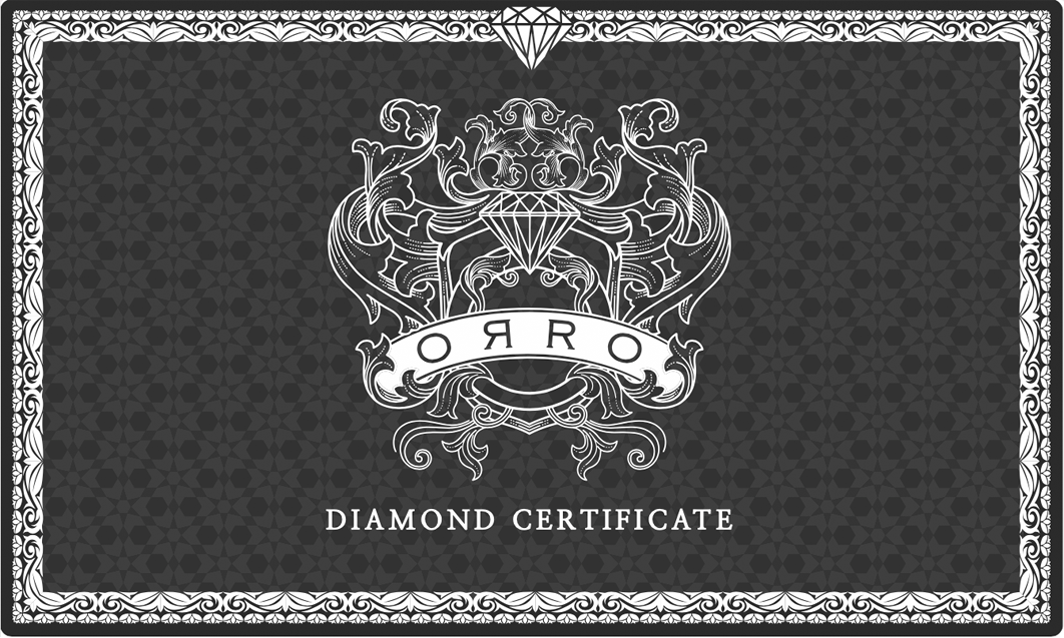
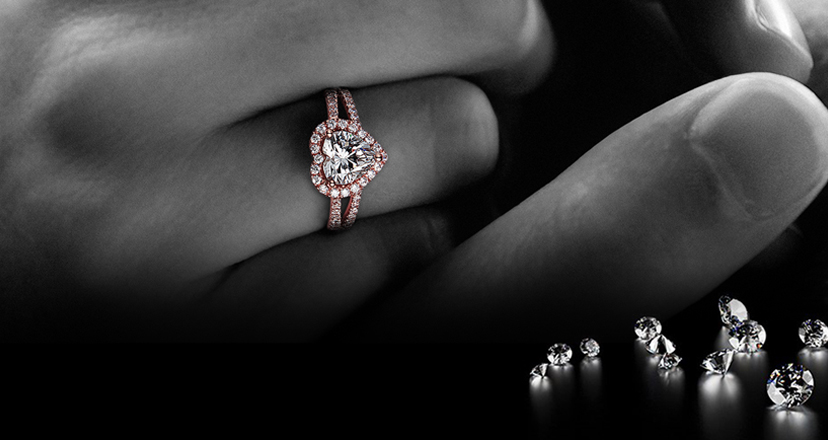
Dual-Certified ORRO Lab Grown Diamonds
For additional assurance, ORRO offers a dual-certification option for selected ORRO Certified Lab-Grown Diamonds. This option includes a second diamond certificate issued by an independent diamond grading laboratory such as the Gemmology Institute of America (GIA), International Gemmology Institute (IGI), or HRD Antwerp.
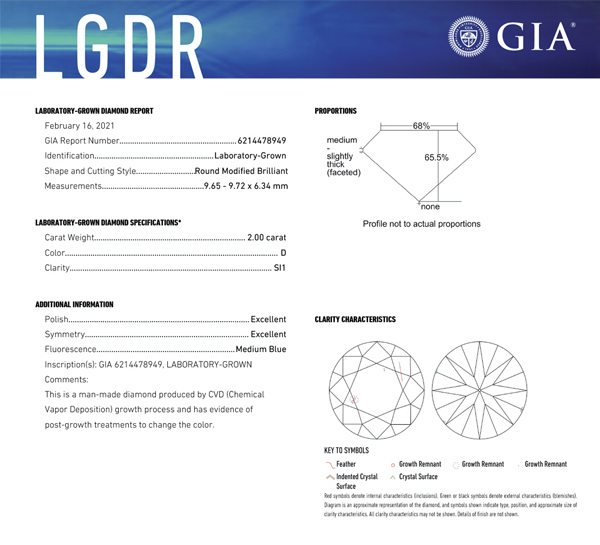
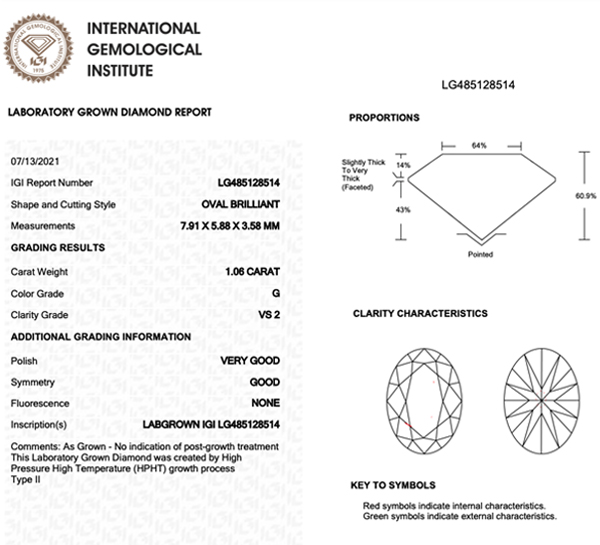
ORRO Certified Lab Grown Diamond Jewelry
For jewelry designs that have multiple diamonds of various cuts and sizes, individual certificates for each diamond may not be available. In such cases, ORRO issues an ORRO Certified Lab Grown Diamond Jewelry certificate. This certificate is in the form of our trademark metal card and is the first in the world to be issued in the form of a metal credit card sized certificate.
The ORRO Certified Lab Grown Diamond Jewelry certificate includes a summary of the total carat weight of diamonds used and the range of colors, cut, and clarity of the diamonds set on the jewelry piece. It also has a description that includes the design code of the jewelry piece. Additionally, the certificate has a unique report number, security features, and a unique QR code that allows you to verify the certificate's authenticity by accessing an online report.
The ORRO Certified Lab Grown Diamond Jewelry certificate includes a summary of the total carat weight of diamonds used and the range of colors, cut, and clarity of the diamonds set on the jewelry piece. It also has a description that includes the design code of the jewelry piece. Additionally, the certificate has a unique report number, security features, and a unique QR code that allows you to verify the certificate's authenticity by accessing an online report.
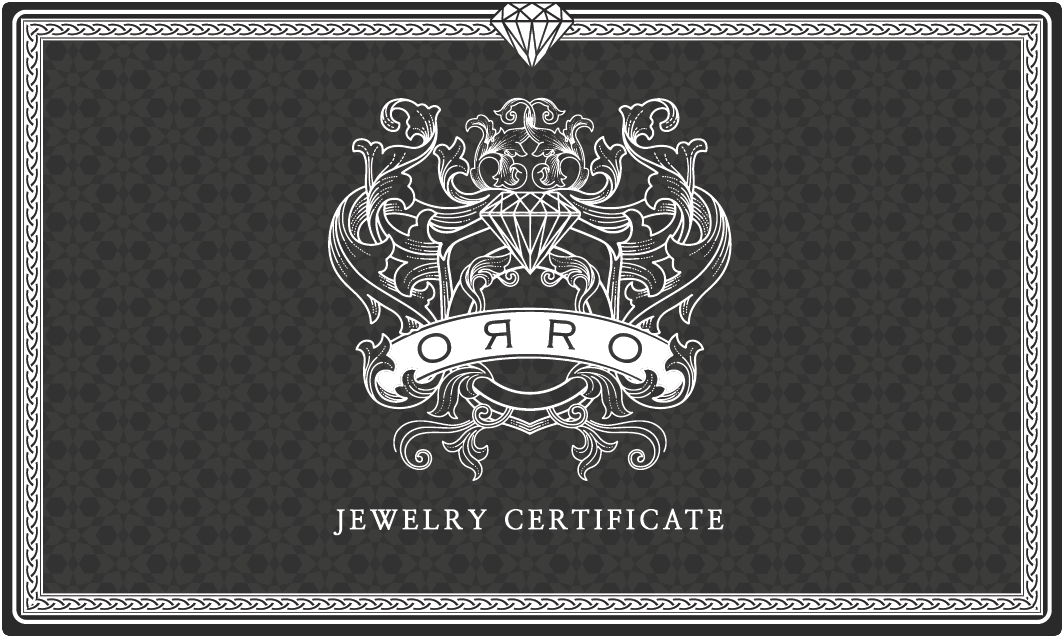
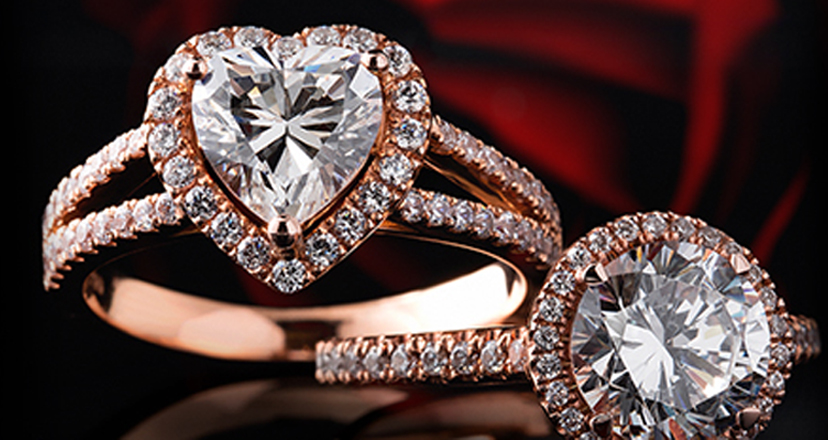
ORRO Certified Lab-Grown Diamonds vs. ORRO Lab-Grown Diamond Simulants
ORRO Certified Lab-grown diamonds and ORRO Lab-Grown diamond simulants may appear similar to consumers, but they are fundamentally different. ORRO Premium Master Cut diamond simulants and ORRO Superior Cut diamond simulants, for instance, may look similar to ORRO lab-grown diamonds, but they are not composed of carbon crystals. As a result, diamond simulants lack the same chemical and physical properties as natural diamonds.
To distinguish between an ORRO Certified lab-grown diamond and an ORRO lab-grown diamond simulant, consumers can use a diamond tester that measures the gemstone's thermal and electrical conductivity. Different gemstones have distinct chemical structures, and each gemstone will conduct heat and electricity differently. However, diamond testers that measure only the thermal conductivity of a gemstone may misidentify moissanites as diamonds due to their similar thermal conductivity. In such cases, gemologists will distinguish a moissanite from a diamond based on each stone's refractive properties.
To distinguish between an ORRO Certified lab-grown diamond and an ORRO lab-grown diamond simulant, consumers can use a diamond tester that measures the gemstone's thermal and electrical conductivity. Different gemstones have distinct chemical structures, and each gemstone will conduct heat and electricity differently. However, diamond testers that measure only the thermal conductivity of a gemstone may misidentify moissanites as diamonds due to their similar thermal conductivity. In such cases, gemologists will distinguish a moissanite from a diamond based on each stone's refractive properties.



